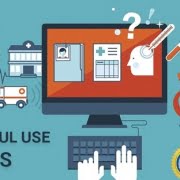Patient Engagement Is Necessary for Practices & Medical Billing
As healthcare providers, you would be constantly trying to help your patients by enhancing the quality of care. However, an essential part of this process is patient engagement in medical billing services.
It can seem like a challenge to interact with patients who are not open to creating a line of communication, but encouraging them is the only way.
That is because patient engagement has actively proven to improve the care and lives of patients. Several factors have been highly effective in helping patients open up and establish communication with their doctors.
So today, we will be discussing some ways that help with patient engagement and improve their outcomes. Ultimately, it helps with improvement activities for MIPS reporting and in the improvement of the medical billing and coding process.
Strategies for Patient Engagement
Some of the most effective strategies for better patient engagement and outcomes are:
- Categorizing Patients by their Health Concerns
- Educating the Masses about their Health
- Mutual Decision-Making Between Patient and Provider
- Continuous Care from Both Sides
- Removing Hurdles to Provide Better Healthcare Services
Categorizing Patients to Improve Care and Billing Efficiency
“Divide and conquer.” While this line is originally for something else, it fits this healthcare strategy perfectly.
The first step in improving patient engagement is to divide patient populations based on their health concerns. It includes:
- Their diagnoses and conditions
- The risks they might face and their levels
- The coverage offered by their medical insurance
- The healthcare services they may require
It can help healthcare providers understand their unique needs and create strategies for delivering the perfect type of care. And this way, patients can get the proper focus, resources, and medical services they require for improving their health. Alongside, you have the clarity to cater to your practice’s revenue cycle management.
Educating the Masses
It is important to keep patients engaged with their health management and help them cooperate.
Many patients find it difficult to follow their medical treatment regimen. Almost 50% of patients with chronic diseases don’t benefit from clinical treatment because they find it difficult to follow their medical services provider’s recommendations. It can cause more issues with their health and lead to a lower quality of life.
That is why it is critical to educate patients. No one does something just because they get told to; they need to understand why they need to do it and why it is necessary. That is why patients need to understand their condition and why following the doctor’s guidelines will help. This way, they will:
- Improve and see the results they want
- Be motivated to continue the treatment program
- Be more satisfied with their treatment
- Communicate easily with their healthcare providers
Different healthcare services providers have even started their own care management programs, where patients get educated about their conditions. One way of seeing this parameter is to add ultimate value to patient care. Moreover, not only does it aid patients but also physicians with their MIPS reporting services.
Shared Decision-Making Lessen Surprise Bills
Here is where the patient-provider relationship really comes into play. Shared decision-making is when patients and clinicians work together and communicate to select the types of tests, treatments, and care they receive. All of this gets decided while keeping clinical evidence in mind.
It is perfect for patient engagement as patients feel more motivated to take up a treatment plan they helped decide. Also, communication should never be one-sided – the treatment needs both the patient’s and the healthcare services provider’s contributions to work.
That is why patient education is super important; so they can make the informed decisions needed to make their healthcare more effective. With informed decisions, there are lesser chances of doing wrong or additional treatments that can result in lesser surprise bills, which is a problem in medical billing services.
Continuous Care Empowers Patients
Visiting your doctor once or twice a year is not enough. There needs to be continuous interaction between caregiver and patient.
Moreover, there needs to be continual interaction between the caregiver and patient, as it yields better results for the health and life of the patient.
Every interaction should be an important one – there should be questions asked, concerns raised, and problems solved. In short, patients should feel cared for and satisfied, which would make them adhere to their care plans more effectively.
Even research has actually shown that such an approach can result in many positive outcomes like:
- Increased patient satisfaction rates
- A decrease in regular hospital visits
- Increase in the use of preventative care measures
Ultimately, practices get to improve their revenue cycle management.
No Barriers for Care Delivery & Successful Medical Billing
The most challenging thing patients face in getting proper care is the lack of access. People living in rural areas have limited access to good food and limited means of communication. That is why if such an area has chronically ill patients, they will have great difficulty getting the proper facilities for their treatment.
That is where virtual treatment comes in. It is an incredibly crucial part of modern healthcare as it increases accessibility for everyone. Tools like Remote Patient Monitoring (RPM) create a bridge and offer care to patients living in hard-to-access areas.
These measures can help provide them with what they need, like a care team, care plans, wellness journey support, etc.
Using technology that facilitates patient participation through various channels can be beneficial because it improves patient-clinician interactions and encourages patients to participate in their care. The end outcome is streamlined reporting services for MIPS along with medical billing services.
Thus, implementing better reporting strategies can lead to better outcomes for both patients and the organization.
















Leave a Reply
Want to join the discussion?Feel free to contribute!